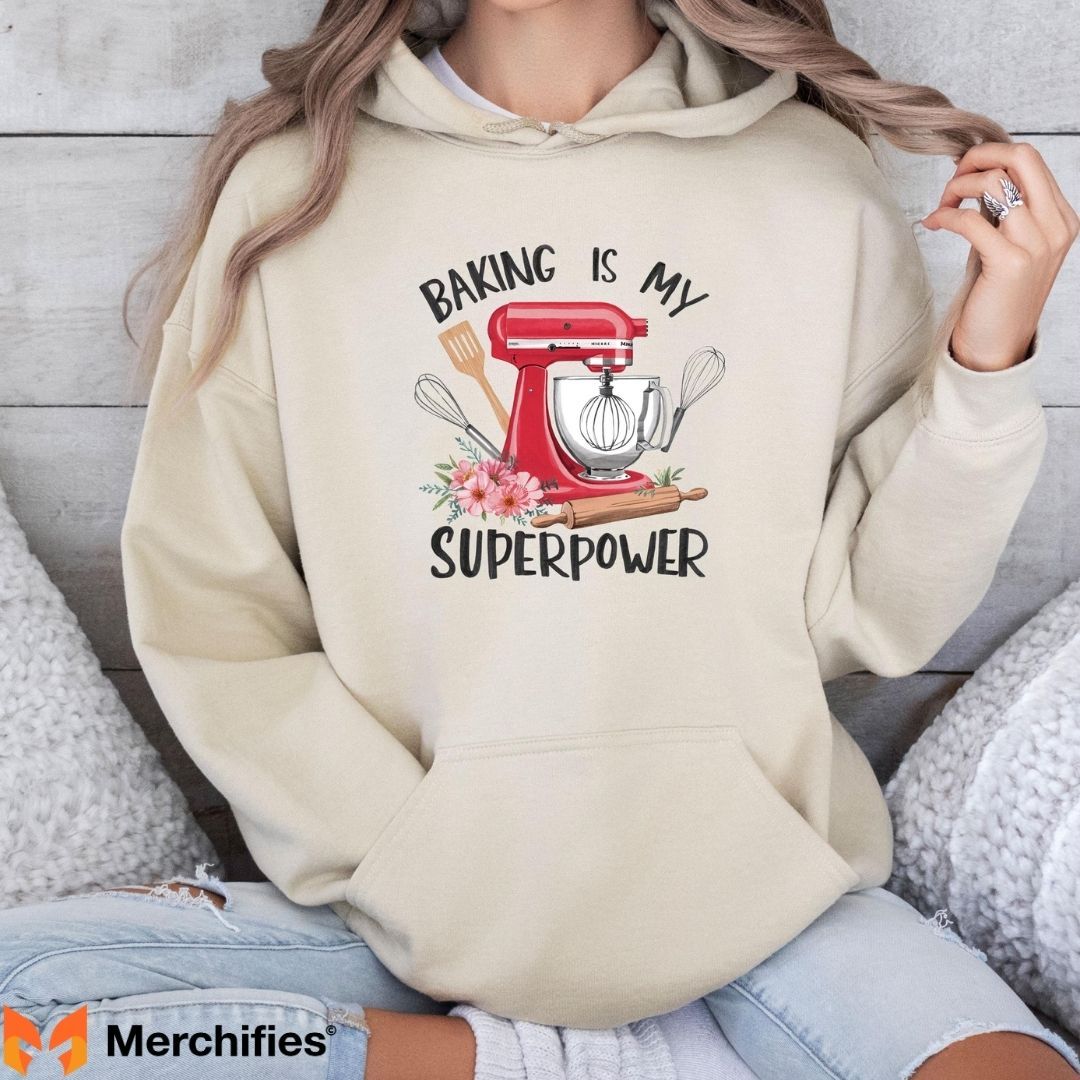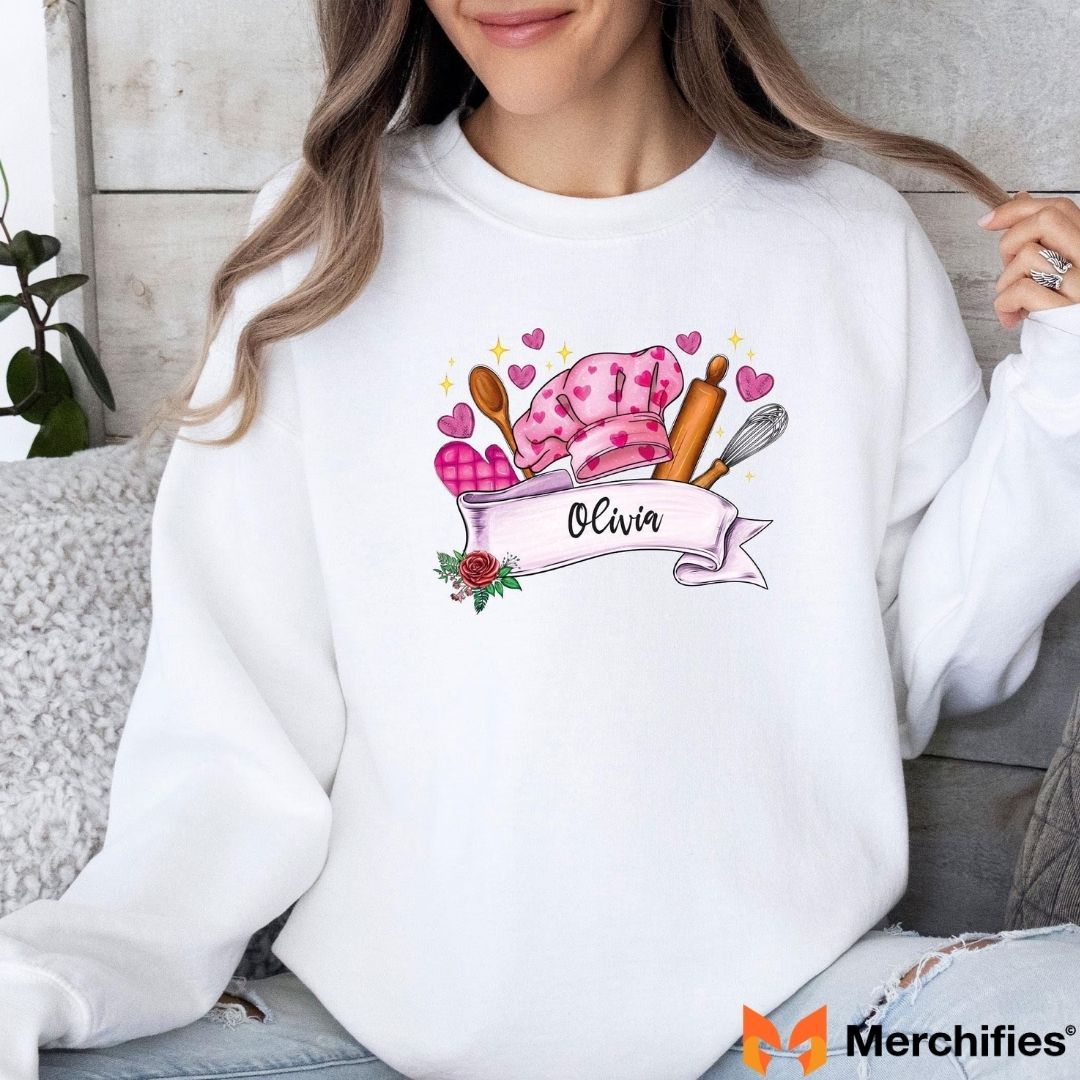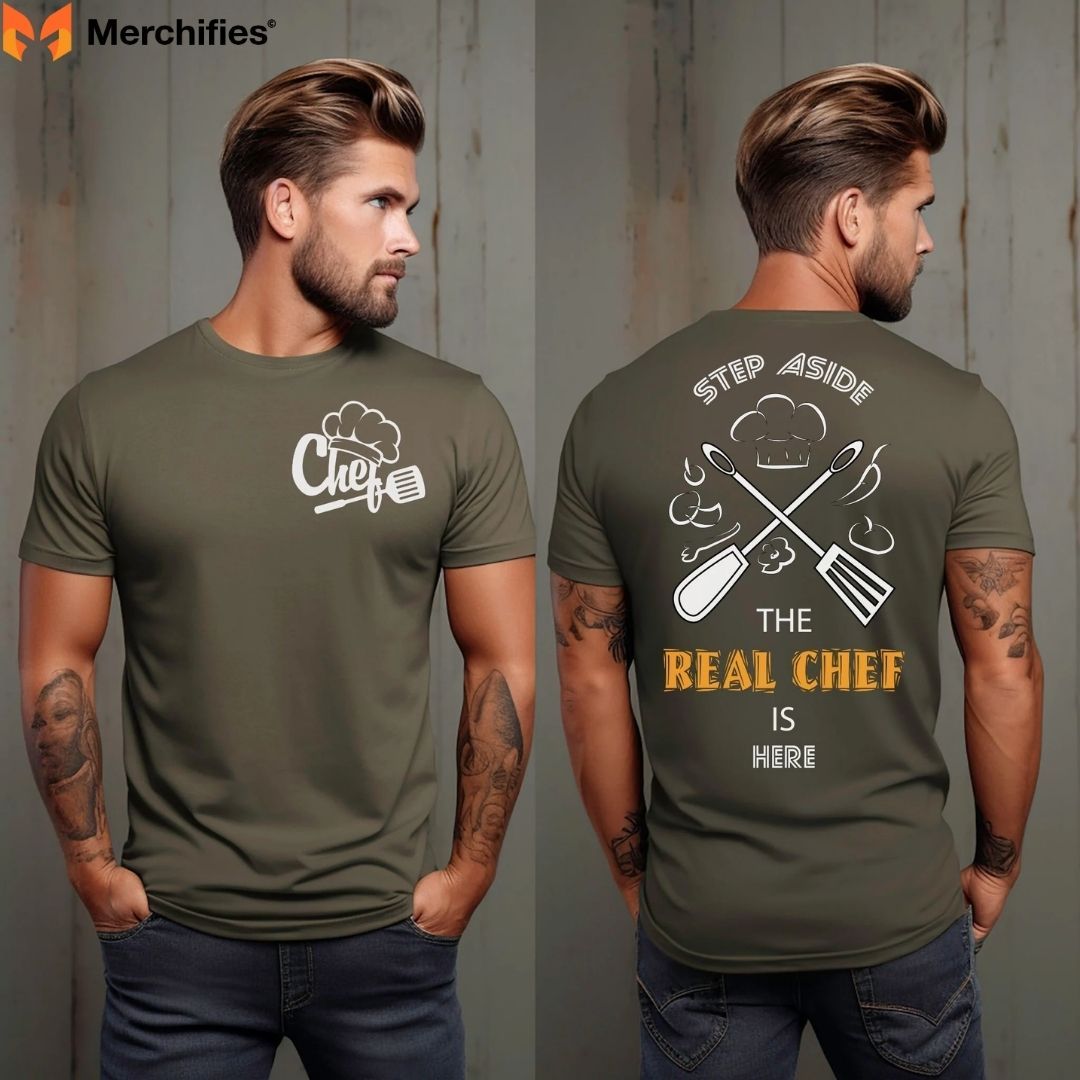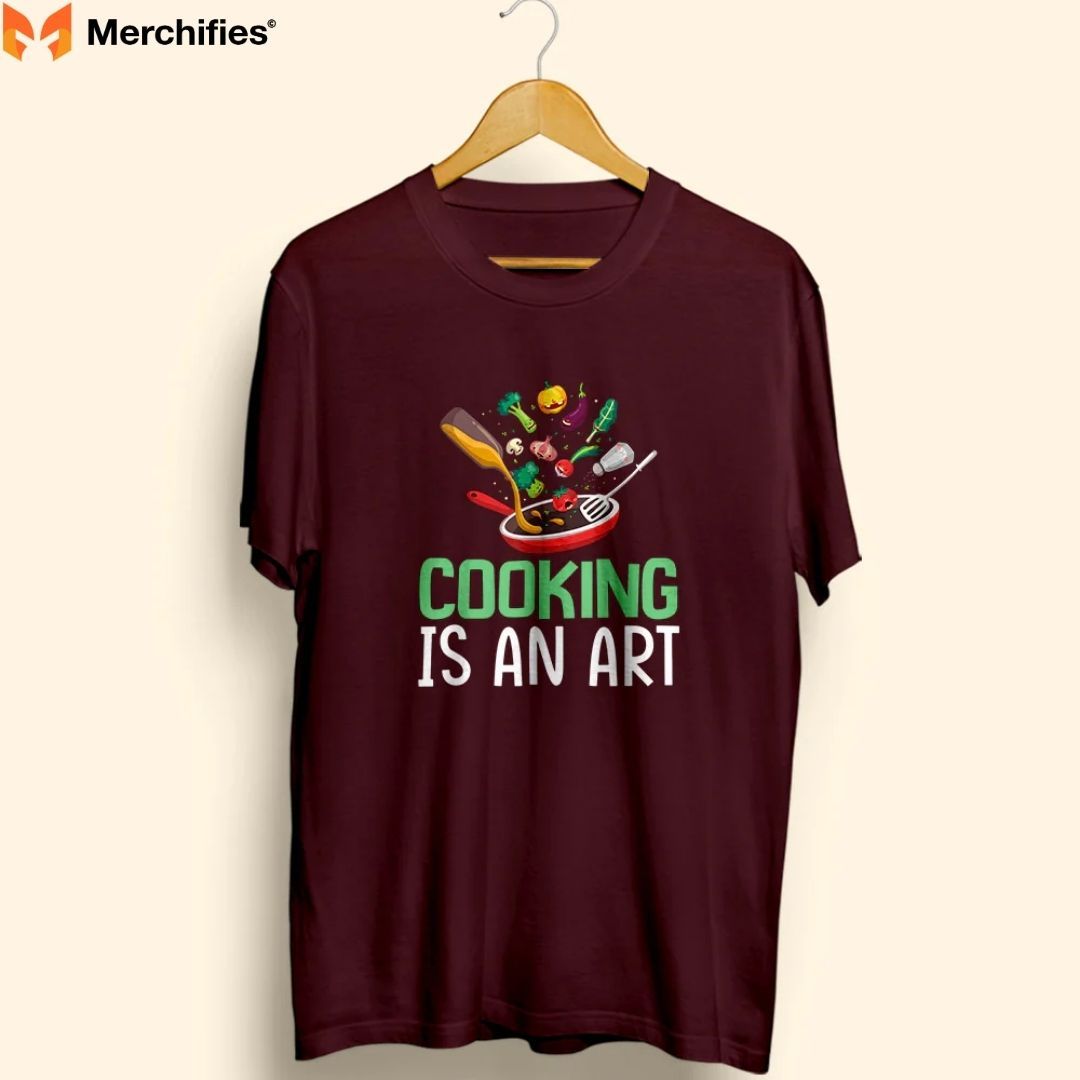Chef Shirt Size & Fit Guide for Comfort in the Kitchen
Find your perfect fit with our chef shirt size guide — designed for comfort, flexibility, and confidence during long hours in the kitchen.

Blog Post Contents
Stepping into a bustling kitchen, whether it's a Michelin-starred restaurant or a vibrant home cooking space, demands attire that goes beyond mere aesthetics. It requires clothing that supports performance, ensures safety, and upholds a professional image. In this ultimate guide, we’ll dive deep into understanding the nuances of chef shirt sizing and how to achieve the perfect cooking t-shirt fit. As Eli Wilder, a seasoned culinary professional with years of experience navigating the demands of various kitchen environments, shares his insights, you’ll learn why the right fit isn't just a preference—it’s a necessity.
Why Your Kitchen Attire's Fit is Crucial for Performance, Safety, and Style
The clothes you wear in the kitchen directly impact your ability to work efficiently and safely. A poorly fitting uniform can be a constant source of distraction, discomfort, and even danger.
More Than Just Appearance: The Impact of Proper Fit
Consider the long hours, the constant movement, and the intense heat in a professional kitchen. Proper fit addresses all these challenges head-on. It ensures comfort during long shifts, allowing for unrestricted mobility and optimal breathability. From a safety perspective, well-fitted attire is paramount; it prevents dangerous snags on equipment, protects against burns from hot surfaces, and eliminates the risk of restricted movement when handling sharp knives or heavy pots. Furthermore, a sharp, well-fitting uniform projects professionalism and confidence, influencing how both colleagues and customers perceive you. Finally, correctly sized garments tend to experience less stress and wear, contributing to their durability and longevity.
Mastering the Chef Jacket Fit (Chef Shirt Size Guide)
The chef jacket is arguably the most iconic piece of culinary apparel. Getting its fit right is essential for any professional. This chef shirt size guide will help you achieve that perfect balance.
Decoding the Chef Jacket: From Traditional to Tailored Fit
Chef jackets come in various styles, each designed with a specific fit in mind. Understanding these distinctions is the first step in finding your ideal culinary apparel.
Understanding Standard Chef Jacket Styles and Their Intended Fit
The Classic/Traditional Fit chef jacket, often double-breasted, is typically roomier, providing ample space for movement and air circulation. This style is favored for its timeless look and comfort in high-heat environments. In contrast, the Modern/Slim Fit offers a more tailored silhouette, often single-breasted, presenting a sleeker, contemporary appearance. Then there are Executive/Specialty Jackets, which might feature specific material blends or design elements catering to particular roles or comfort preferences. When looking at a chef shirt size guide, remember to consider the intended style.

Essential Measurements for a Perfect Chef Coat
Accuracy in measuring yourself is critical. Don't guess your size; take the time to get it right. This section is a crucial part of any reliable chef shirt size guide.
How to Measure Yourself Accurately (Step-by-Step Guide)
To ensure a precise fit for your next chef coat or kitchen uniform, follow these steps:
- Chest measurement: Measure around the fullest part of your chest, under your armpits, keeping the tape horizontal.
- Waist measurement: Measure around your natural waistline, typically the narrowest part of your torso, just above your navel.
- Sleeve length: With your arm slightly bent, measure from the top of your shoulder (where the sleeve seam would sit) down to your wrist.
- Shoulder width: Measure straight across your upper back, from the edge of one shoulder to the other.
- Back length: Measure from the base of your neck (at the top of your spine) down to where you'd like the jacket to end, typically around the hip.
Tips for Measuring: Use a tailor's tape, stand relaxed, measure over light clothing.
For the most accurate results, always use a flexible tailor's tape measure. Stand in a relaxed, natural posture, and measure over light clothing, such as a t-shirt, rather than bulky sweaters. This ensures the measurements reflect your true body dimensions for the best workwear measurements.
Navigating Chef Jacket Sizing Charts (Brands & Variations)
Once you have your measurements, you'll need to interpret them using sizing charts.
Understanding S, M, L vs. numerical sizing
Many brands use standard small, medium, large (S, M, L) sizing, while others, particularly for more precise professional wear, use numerical sizing (e.g., 38, 40, 42). Be aware of the differences and always cross-reference with the brand's specific chart.
Metric vs. Imperial systems
Some charts may use metric (centimeters) while others use imperial (inches). Ensure you're looking at the correct system or convert your measurements accordingly.
The importance of brand-specific charts
"Never assume your size," advises Eli Wilder. "A large from one brand might be a medium from another. Always, always check the brand's unique chef shirt size guide." This is especially true for professional chef wear.

The "Goldilocks" Fit: Not Too Tight, Not Too Loose
The perfect fit for a chef jacket isn't about being skin-tight or excessively baggy; it's about finding that sweet spot.
Ensuring full range of motion (reaching, bending, lifting)
A well-fitted jacket should allow for complete freedom of movement. You should be able to reach overhead, bend down, and lift objects without feeling restricted or having seams pull excessively.
Allowing for layering (undershirt, apron)
Consider what you'll wear underneath. The jacket should comfortably accommodate an undershirt or base layer without feeling stretched or tight. It should also integrate well with an apron, allowing it to sit properly without bunching.
Maintaining a professional, sharp appearance
A jacket that's too large looks sloppy, while one that's too small can appear strained and uncomfortable. The right fit conveys confidence and respect for your culinary clothing.
Safety considerations: preventing excessive bagginess around equipment
Eli Wilder emphasizes the safety aspect: "Baggy sleeves or a jacket that's too long can easily snag on handles, catch fire from an open flame, or get caught in machinery. The right chef shirt size guide helps prevent these serious kitchen hazards."
Finding Your Ideal Cooking T-Shirt Fit (Cooking T Shirt Fit)
Beyond the formal chef jacket, many culinary professionals and home cooks rely on comfortable cooking t-shirts. Getting the cooking t shirt fit right is equally important for comfort and practicality.

The Perfect Cooking T-Shirt: Balancing Comfort, Breathability, and Practicality
A great cooking t-shirt should be an extension of your body, offering unrestricted movement while keeping you cool.
Different T-Shirt Fits for the Culinary Environment
Just like chef jackets, t-shirts come in various fits tailored for different preferences and needs in the restaurant uniform setting or home kitchen.
Relaxed/Loose Fit (maximum air circulation)
This fit provides the most room, ideal for maximum air circulation and comfort in extremely hot environments. It allows the fabric to move freely away from the skin.
Athletic/Performance Fit (form-fitting but flexible)
Often made with stretch fabrics, this fit is designed to hug the body without restricting movement. It's excellent for those who appreciate a sleeker look combined with high flexibility.
Standard/Regular Fit
A classic middle-ground, the standard fit is neither too tight nor too loose, offering everyday comfort and a traditional silhouette. Your choice depends on personal preference and the specific demands of your cooking style, all influencing your ideal cooking t shirt fit.
Key Considerations for Cooking T-Shirts
When selecting a t-shirt for cooking, prioritize these factors.
Breathability and Ventilation: Essential for hot kitchens.
In a hot kitchen, a t-shirt's ability to breathe is paramount. Look for fabrics and designs that promote airflow to keep you cool and dry.
Range of Motion: Unrestricted movement for chopping, stirring, etc.
Whether you're dicing vegetables, stirring a pot, or plating a dish, your t-shirt should never hinder your movements. Ensure shoulder and armholes allow full mobility.

Durability and Stain Resistance: Practicality for kitchen work.
Cooking environments are tough on clothes. Choose materials known for their durability and, ideally, with features like stain-release finishes to withstand spills and frequent washing.
Safety: Avoiding overly baggy sleeves or hemlines near flames/machinery.
Similar to chef jackets, excessively baggy sleeves on a t-shirt can be a safety hazard, potentially catching fire or getting caught in blenders or mixers. A good cooking t shirt fit ensures safety without compromising comfort.
Material Matters: How Fabric Influences T-Shirt Fit and Comfort
The fabric choice significantly impacts how a t-shirt feels and performs in the kitchen.
Cotton (breathable, absorbent, can shrink)
100% cotton is a classic choice, known for its breathability and absorbency. However, it can retain moisture and is prone to shrinkage, so consider sizing up if a brand is known for shrinkage.
Polyester & Blends (moisture-wicking, durable, quick-dry)
Polyester and poly-cotton blends are excellent choices for cooking t-shirt fit due to their moisture-wicking properties, durability, and quick-dry capabilities. They help keep you dry and comfortable in sweaty conditions.
Performance Fabrics (engineered for specific culinary needs)
Some brands offer specialized performance fabrics with advanced features like anti-microbial properties, enhanced stretch, or targeted ventilation zones, specifically engineered for the unique demands of a culinary environment. This t-shirt material for cooking offers superior comfort and function.

General Sizing Tips & Best Practices for All Kitchen Attire
Regardless of whether you're selecting a chef jacket or a cooking t-shirt, these universal tips will help you make the best choice.
Universal Advice for Ensuring the Right Fit Every Time
Smart shopping for kitchen wear goes beyond just knowing your measurements.
Always Consult the Brand's Specific Size Chart
This cannot be overstated. Every brand has its own unique sizing standards. Always refer to their detailed chef shirt size guide or cooking t shirt fit chart.
Consider Your Body Type: Tailoring for tall, petite, athletic, or plus-size frames.
Standard sizing doesn't always account for diverse body shapes. If you have a specific body type—tall, petite, athletic, or plus-size—look for brands that offer specialized lines or consider how general sizing might translate to your unique build.
Read Customer Reviews on Sizing: Real-world feedback can be invaluable.
Customer reviews often contain practical, real-world insights into a garment's fit. Look for comments like "runs small," "true to size," or "sleeves are long." Eli Wilder often consults these reviews, noting, "They're a treasure trove of collective experience."
The "Movement Test": Try on and perform typical kitchen motions.
Once you receive your garment, try it on and actively perform actions you would in the kitchen: reach, bend, chop, stir. This "movement test" immediately reveals if the fit is truly functional.

Account for Shrinkage: Especially with cotton garments; buy slightly larger if needed.
Natural fibers like cotton are prone to shrinkage, particularly after the first few washes. If you're buying 100% cotton and are on the fence between sizes, it might be wise to size up slightly.
Think About Layering: Will you wear an undershirt or base layer?
If you plan to wear an undershirt or base layer underneath your chef jacket or t-shirt, factor that into your sizing choice to ensure it doesn't become too tight.
Don't Forget Hemming: Sleeves and jacket length can often be adjusted.
For a truly custom fit, remember that sleeve length and jacket length can often be professionally hemmed. This is particularly useful for chef jackets, allowing for a polished and tailored look.
The Role of Fabric and Features in Overall Comfort & Fit
Beyond the cut and measurements, the fabric and specialized features of your culinary garments play a significant role in your overall comfort and the perceived fit.
Beyond Size: How Fabric Choice Enhances Your Kitchen Wear
The material is fundamental to how a garment feels, breathes, and performs under pressure.
Common Fabrics for Chef Jackets: Cotton Twill, Poly-Cotton Blends, Stretch Fabrics.
Cotton twill offers durability and breathability, while poly-cotton blends provide a balance of comfort, wrinkle resistance, and longevity. Modern chef jackets often incorporate stretch fabrics (like those with spandex or elastane) for enhanced flexibility and freedom of movement, greatly improving the chef shirt size guide experience by adapting to your body.
Common Fabrics for Cooking T-Shirts: 100% Cotton, Performance Polyesters, Blends.
For cooking t-shirts, 100% cotton is comfortable but can get damp. Performance polyesters excel at moisture-wicking and quick-drying, perfect for hot environments. Various blends combine the best attributes of different fibers to create optimal comfort and utility for any cooking t shirt fit.

Advanced Features: Mesh ventilation, moisture-wicking technology, stretch panels, stain-release finishes.
Look for advanced features that boost comfort and functionality. Mesh ventilation panels (often under the arms or on the back) provide targeted airflow. Moisture-wicking technology pulls sweat away from the body. Stretch panels enhance mobility, and stain-release finishes help your garments stay cleaner longer, making them truly professional chef wear.
Invest in Your Comfort, Safety, and Professional Image
Ultimately, investing time and effort into selecting the right chef shirt size guide and cooking t shirt fit isn't just about buying clothes; it's about investing in your career, your well-being, and your reputation.
Recap of Key Takeaways: Proper fit is non-negotiable for culinary professionals.
We've covered the critical importance of accurate measurements, understanding different fits and styles, and leveraging brand-specific sizing charts. Remember, a garment's fit impacts everything from your comfort and mobility to your safety and professional presentation.
The Long-Term Benefits: Increased productivity, reduced fatigue, enhanced safety, and a confident presence in the kitchen.
A well-fitted uniform translates into tangible benefits: increased productivity due to unrestricted movement, reduced fatigue from greater comfort, enhanced safety by preventing snags and burns, and a confident presence that positively impacts your interactions and overall work performance. As Eli Wilder aptly concludes, "Your attire is your armor in the kitchen. The better it fits, the better you perform, feel, and project professionalism. Never underestimate the power of a perfectly fitting chef shirt or cooking t-shirt." Investing wisely in your culinary apparel is an investment in yourself.